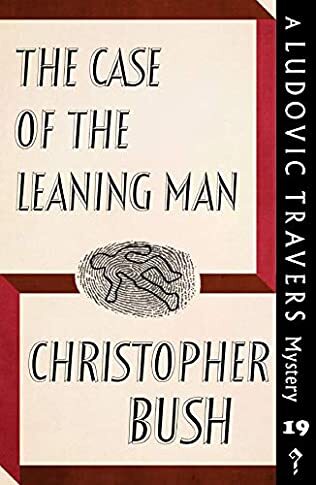The Case Of The Leaning Man

A review of The Case of the Leaning Man by Christopher Bush
Christopher Bush has produced a workmanlike murder mystery in this, the nineteenth in his Ludovic Travers series, originally published in 1938 and reissued by Dean Street Press. It is a curious affair, one in which Travers seems unable to put his finger on precisely what has gone on until a flash of inspiration in the final chapter and the previously ascetic amateur sleuth with the ear of Commissioner of Police seems to have found love.
As is Bush’s way, the story starts off with three seemingly unconnected incidents. The eponymous leaning man is found worse for wear near a London theatre. When Travers finds him, a leading actor, Sir Jerome Haire, is also on the scene. The man dies, having been poisoned. Meanwhile, in an exclusive London hotel which specialises in providing luxury accommodation for visitors from abroad whose skin pigmentation is not at one with the English – there is, to modern eyes, a sadly mild racist overtone to the narrative which may be off-putting for those of a more sensitive disposition – a Maharajah by the name of Amli has been found murdered.
Amli had two mysterious visitors, one of whom wore a beard and turban, and there were signs of a struggle. The Maharajah’s murder has potential diplomatic ramifications and George “The General” of the Yard is anxious to accelerate investigations before the chaps from the diplomatic corps muddy the waters.
The third strand is a spat between Haire’s two daughters, Bernice, a classical dancer, and Joy, a diseuse, a female entertainer who deploys monologues. Their spat threatens to derail a lucrative American tour and has driven their impresario to his wit’s end. He visits Travers to see whether he can use his persuasive charms to patch it up. Travers, of course, knows both girls.
Naturally, these three strands come together, the leaning man being an actor, down on his luck, who helped Sir Jerome on his climb up the greasy pole. In his possession is a distinctive wallet which belonged to Amli. Travers spots Joy Haire wearing an expensive emerald ring, which she claims is made of paste, but our sleuth knows better and surmises that cherchez le homme may resolve the dispute between the girls.
In all of this is Amli’s secretary who, despite being dismissed by the Maharajah, came back to the suite after the murder on the look out for some papers. The net tightens as Travers discovers that Amli and Travers had travelled back on the same ship from India to Blighty, but there is a significant fly in the ointment – Travers is beginning to fall in love with Bernice and is reluctant, even if his well-honed detective skills tell him otherwise, to believe that she is implicated in this complicated plot. As the investigations move to some sort of conclusion, Travers, convinced that he knows what has happened but unwilling to confront the truth, goes away on holiday.
However, he has some nagging thoughts, especially when he recalls some off-the-cuff remarks made by Haire’s neighbours. In his mind Travers is now able to absolve Bernice of any blame and confronts the culprit who does the decent thing. At the end there are signs that Bernice is falling in love with the sleuth.
What started out at a cracking pace with three intriguing but disparate strands got rather bogged down with investigations seemingly leading nowhere and Travers having a crisis of conscience as he fears that his inamorata is heavily implicated in the plot that leads to two deaths. As a result his withdrawal from the scene and then his understanding of what went on seem all a bit rushed and sudden.
It is not one of Bush’s stories but even a mediocre Travers tale is well worth reading.



